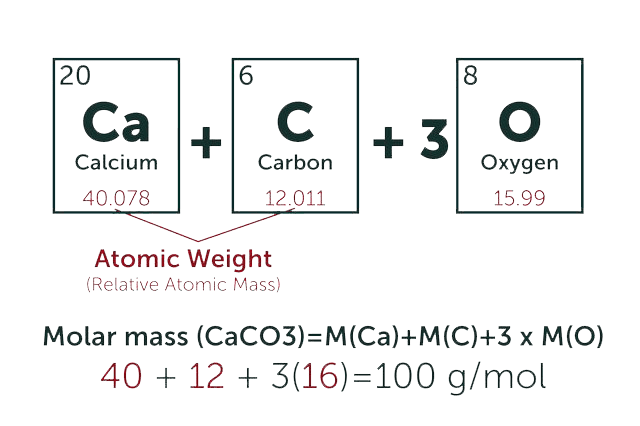Pyloricidin A
* Please be kindly noted products are not for therapeutic use. We do not sell to patients.
| Category | Antibiotics |
| Catalog number | BBF-02079 |
| CAS | |
| Molecular Weight | 653.76 |
| Molecular Formula | C31H51N5O10 |
Online Inquiry
Description
Pyloricidin A is an antibiotic against Helicobacter pylori produced by Bacillus sp. HC-70. It has strong anti-Helicobacter pylori activity, with a MIC of 0.0625 pig/mL. It has no activity against other bacteria and yeast.
Specification
| IUPAC Name | (3R)-3-[[(2R,3S,4S,5R)-5-[[(2S)-2-[[(2S)-2-[[(2S)-2-amino-3-methylbutanoyl]amino]-3-methylbutanoyl]amino]-4-methylpentanoyl]amino]-2,3,4,6-tetrahydroxyhexanoyl]amino]-3-phenylpropanoic acid |
| Canonical SMILES | CC(C)CC(C(=O)NC(CO)C(C(C(C(=O)NC(CC(=O)O)C1=CC=CC=C1)O)O)O)NC(=O)C(C(C)C)NC(=O)C(C(C)C)N |
| InChI | InChI=1S/C31H51N5O10/c1-15(2)12-20(34-30(45)24(17(5)6)36-29(44)23(32)16(3)4)28(43)35-21(14-37)25(40)26(41)27(42)31(46)33-19(13-22(38)39)18-10-8-7-9-11-18/h7-11,15-17,19-21,23-27,37,40-42H,12-14,32H2,1-6H3,(H,33,46)(H,34,45)(H,35,43)(H,36,44)(H,38,39)/t19-,20+,21-,23+,24+,25+,26+,27-/m1/s1 |
| InChI Key | WDNOOPOWGWWJRB-GEHIXKENSA-N |
Properties
| Appearance | Colorless Needle Crystal |
| Antibiotic Activity Spectrum | Gram-negative bacteria |
| Boiling Point | 1072.4±65.0°C at 760 mmHg |
| Density | 1.3±0.1 g/cm3 |
Reference Reading
1. Total synthesis of novel antibiotics pyloricidin A, B and C and their application in the study of pyloricidin derivatives
Atsushi Hasuoka, Yuji Nishikimi, Yutaka Nakayama, Keiji Kamiyama, Masafumi Nakao, Ken-ichiro Miyagawa, Osamu Nishimura, Masahiko Fujino J Antibiot (Tokyo). 2002 Feb;55(2):191-203. doi: 10.7164/antibiotics.55.191.
The novel natural antibiotics pyloricidin A, B and C, which possess potent and highly selective anti-Helicobacter pylori activity, were synthesized from D-galactosamine as a chiral template for the common (2S,3R,4R,5S)-5-amino-2,3,4,6-tetrahydroxyhexanoic acid moiety. The synthetic strategy, using 2-amino-2-deoxyuronic acid derivatives as key intermediates, was also useful to prepare a series of derivatives modified at the beta-D-phenylalanine and with altered stereochemistry on the 5-amino-2,3,4,6-tetrahydroxyhexanoic acid moiety. From the drastic decrease of their anti-H. pylori activity, it was clear that the beta-D-phenylalanine part and the stereochemistry of the 5-amino-2,3,4,6-tetrahydroxyhexanoic acid moiety were significant for the activity.
2. Synthesis and anti-Helicobacter pylori activity of pyloricidin derivatives I. Structure-activity relationships on the terminal peptidic moiety
Atsushi Hasuoka, Yuji Nishikimi, Yutaka Nakayama, Keiji Kamiyama, Masafumi Nakao, Ken-ichiro Miyagawa, Osamu Nishimura, Masahiko Fujino J Antibiot (Tokyo). 2002 Mar;55(3):322-36. doi: 10.7164/antibiotics.55.322.
The novel natural antibiotics pyloricidin A, B and C possess potent and highly selective antibacterial activity against Helicobacter pylori. In order to investigate the structure activity relationships for the terminal peptidic moiety, a series of pyloricidin B and pyloricidin C derivatives, bearing various amino acids in the moiety, were prepared and evaluated for their anti-H. pylori activity. The derivatives bearing alpha-D-, beta- and gamma-amino acids or peptidemimetics showed drastically decreased activity. On the other hand, the derivatives with a-L-amino acids were found to maintain the activity. Among the derivatives prepared in this work, the allylglycine derivative 2s showed the most potent anti-H. pylori activity, with an MIC value of less than 0.006 microg/ml against H. pylori NCTC11637, which is 60-fold greater than the activity of the lead compound pyloricidin C.
3. Synthesis and anti-Helicobacter pylori activity of pyloricidin derivatives II. The combination of amino acid residues in the dipeptidic moiety and its effect on the anti-Helicobacter pylori activity
Atsushi Hasuoka, Yuji Nishikimi, Yutaka Nakayama, Keiji Kamiyama, Masafumi Nakao, Ken-ichiro Miyagawa, Osamu Nishimura, Masahiko Fujino J Antibiot (Tokyo). 2002 May;55(5):499-507. doi: 10.7164/antibiotics.55.499.
The novel natural antibiotics pyloricidin A, B and C, consisting of a common (2S,3R,4R,5S)-5-amino-2,3,4,6-tetrahydroxyhexanoyl-beta-D-phenylalanine moiety and a terminal peptidic moiety (pyloricidin A: L-valine-L-valine-L-leucine; pyloricidin B: L-valine-L-leucine; pyloricidin C: L-leucine), exhibit potent and highly selective anti-Helicobacter pylori activity. In order to develop more potent compounds and to investigate structure activity relationships for the peptidic moiety with regard to the combination of amino acids, a series of derivatives with various dipeptidic moieties were prepared and evaluated for their anti-H. pylori activity. The combination of the two amino acids in the moiety was found to have a significant effect on the activity; the compound with Nva-Abu showed excellent anti-H. pylori activity with an MIC value of 0.013 microg/ml against H. pylori TN2. In addition, this compound was found to show 60% clearance of H. pylori from infected Mongolian gerbils upon repetitive oral administration (10 mg/kg, b. i. d. for 7 days).
Recommended Products
| BBF-03428 | Tubermycin B | Inquiry |
| BBF-01829 | Deoxynojirimycin | Inquiry |
| BBF-03756 | Amygdalin | Inquiry |
| BBF-04609 | 1,1-Dimethylbiguanide hydrochloride | Inquiry |
| BBF-03800 | Moxidectin | Inquiry |
| BBF-04301 | Tulathromycin A | Inquiry |
Bio Calculators
* Our calculator is based on the following equation:
Concentration (start) x Volume (start) = Concentration (final) x Volume (final)
It is commonly abbreviated as: C1V1 = C2V2
* Total Molecular Weight:
g/mol
Tip: Chemical formula is case sensitive. C22H30N4O √ c22h30n40 ╳


